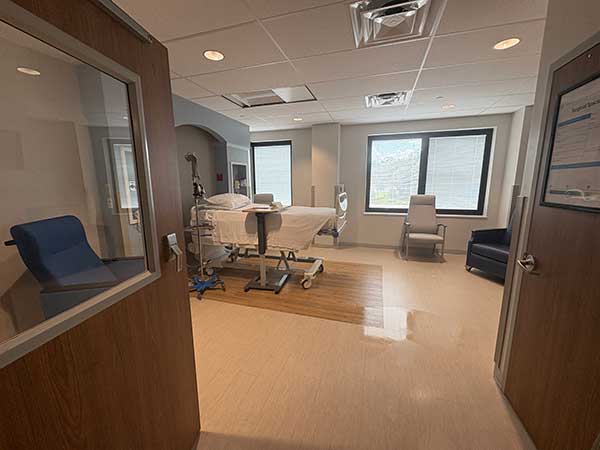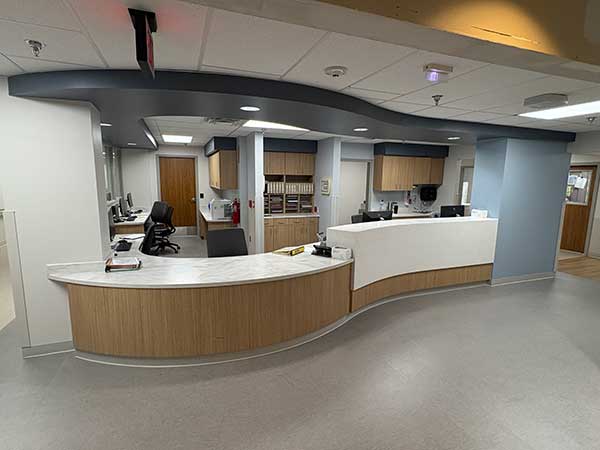
At Parkland Medical Center, our highly trained spine surgeons use the latest technologies to treat injuries and chronic conditions affecting the neck and back. In many cases, we can relieve pain and heal injuries through nonsurgical care, such as physical therapy. However, if surgery is needed, we have an advanced spine surgery program with advanced technology where we will use minimally invasive techniques whenever possible.
For more information about surgical or nonsurgical back and spine care, call our Consult-A-Nurse® team at (877) 642-2362.
Back and neck conditions we treat
We diagnose and treat an array of conditions, including:
- Bone spurs (bone overgrowths)
- Degenerative disc disease (the breakdown of the discs)
- Herniated discs (ruptured or bulged discs)
- Osteoarthritis (cartilage in the joints wears down)
- Sciatica (nerve irritation)
- Scoliosis and kyphosis (spinal curvature)
- Spinal stenosis and myelopathy (narrowing of the spinal canal)
- Spinal tumors and cancer (growths in or around the spinal column or cord)
- Spine fractures (caused by trauma, injury or arthritis)
- Spine infections (osteomyelitis)
- Spondylolisthesis (one vertebra slips over another)
- Sports injuries (caused by repetitive movements or trauma)
Robotic Spine Surgery
Parkland Medical Center offers minimally invasive robotic surgery and is the first hospital in New Hampshire to offer The ExcelsiusGPS™ system technology. Robotic surgery technology helps guide surgeons along a patient’s spine to more accurately place implants using minimally invasive techniques. Medical images are taken and imported into the system and the surgeon uses these images to determine the size and placement of implants and creates a plan based on the patient’s anatomy. This plan guides a rigid robotic arm to a specific region of the spine. Throughout the procedure, the surgical instruments and implants are continuously displayed on the screen for the surgeon and staff to monitor.
The system not only provides benefits to patients, but to operating room staff, as well. Traditional spine surgeries require multiple CT scans throughout the procedure. The improved imaging of the new system greatly reduces that need – and greatly reduces the amount of radiation exposure endured by patients and staff.
Nonsurgical and minimally invasive back and neck treatments
Diagnosis starts with an assessment of your overall health and lifestyle. Then we’ll recommend safe and appropriate treatment options for your unique situation.
Before suggesting spine surgery, we may recommend nonsurgical or minimally invasive spine treatments available through our orthopedic care program, such as:
- Physical therapy and rehabilitation
- Pain management
- Spinal injections
- Nerve stimulation techniques
- Interventional spine procedures
Advanced spine surgery
Thanks to advances in technology and minimally invasive techniques, our spine surgeons can stabilize joints, decompress pinched nerves, fuse bones and correct deformities using only simple, small incisions. We perform a variety of minimally invasive spine surgeries, including:
- Discectomy/microdiscectomy: Your orthopedic surgeon will remove all or part of the disc (the cushion between the vertebrae).
- Laminectomy or laminotomy: Your spine surgeon will remove part of the backbone, which covers the spinal canal to relieve pressure on the spinal nerves.
- Foraminotomy: In this procedure, your surgeon will remove bone or tissue to open the space where the nerves leave the spinal canal.
- Disc replacement surgery: Your surgeon will replace a damaged disc with an artificial one.
- Kyphoplasty/vertebroplasty: This procedure treats spinal fractures, eases pain and restores height. A kyphoplasty uses a balloon to create a space, which is filled with medical cement. During a vertebroplasty, medical cement is injected into the spongy vertebral bone.
- Spinal fusion: This procedure increases spine stability by joining two vertebrae using bone grafts and sometimes implants, such as rods and screws. Our spine surgeons perform extreme lateral interbody fusion (XLIF), which is a minimally invasive technique to access the spine through the side. We also perform axial lumbar interbody fusion (AxiaLIF), which is a minimally invasive spine surgery for the lower back.


Our private and spacious patient recovery rooms on the third floor offer patients a concierge service with amenities in a comforting and quiet setting.
